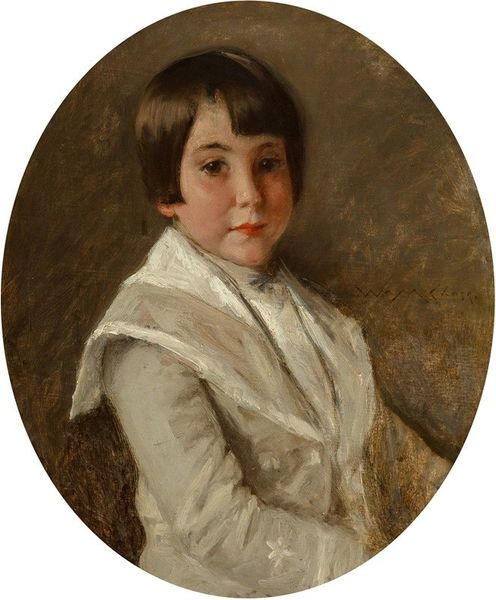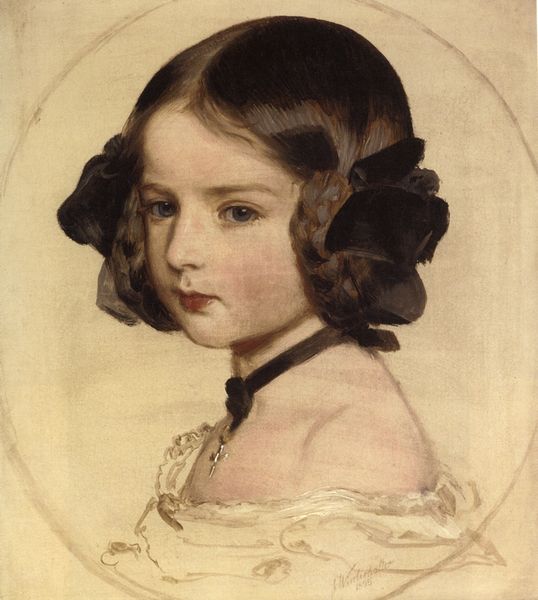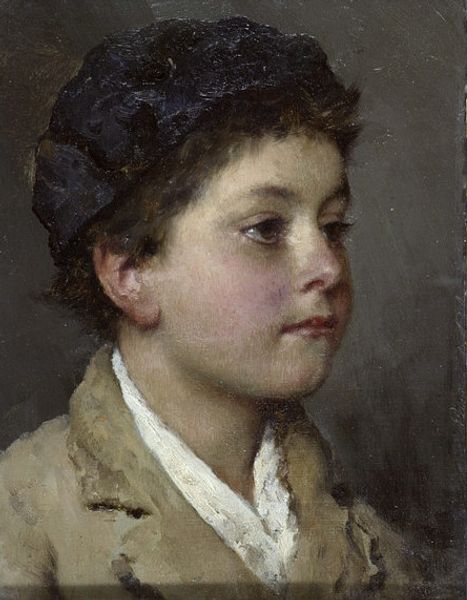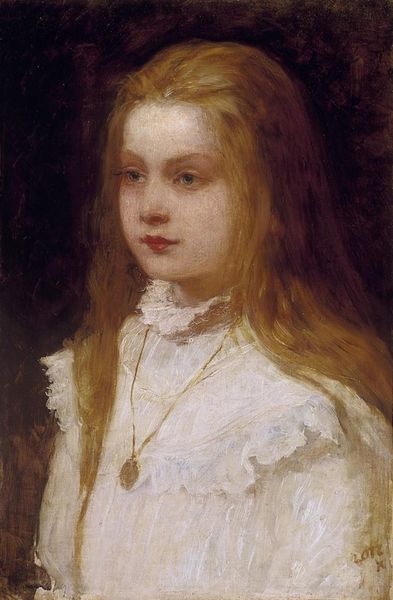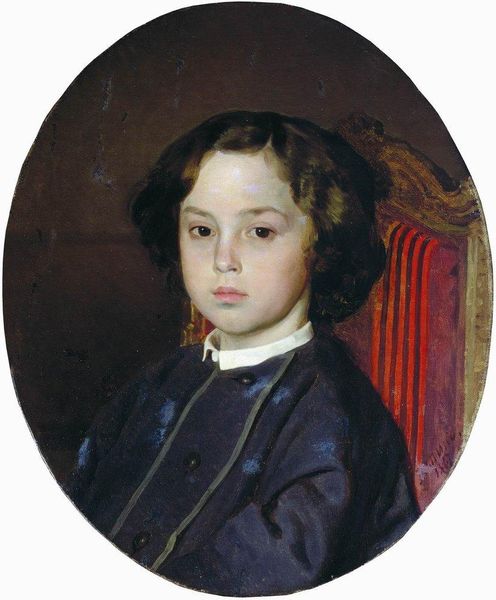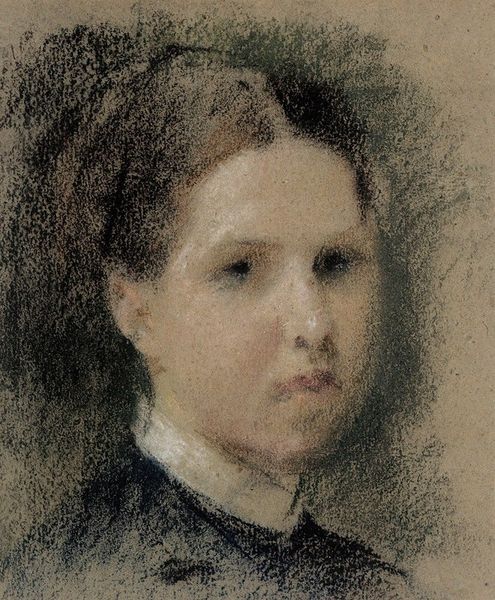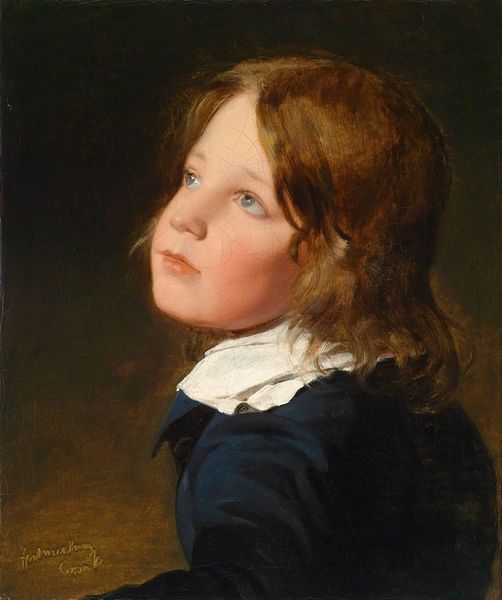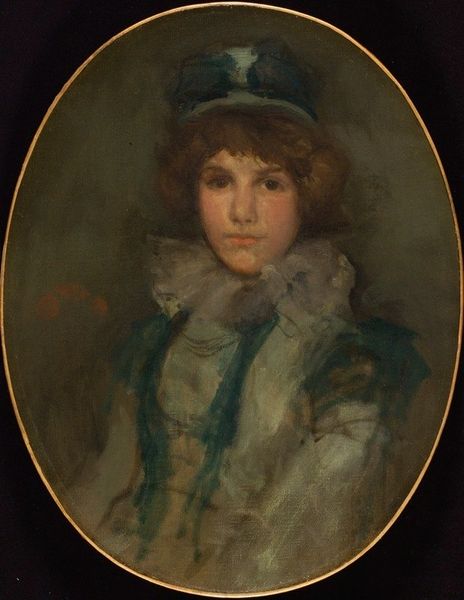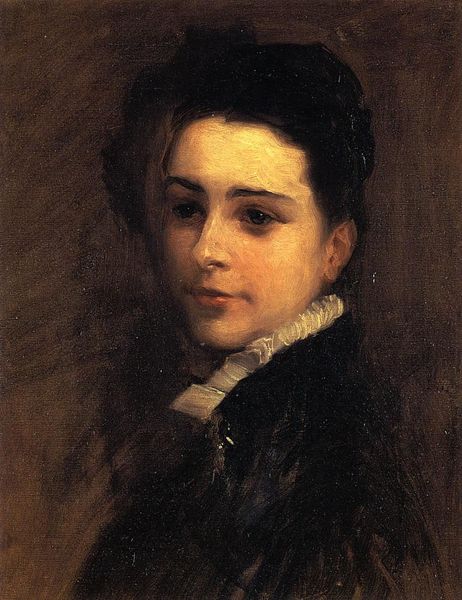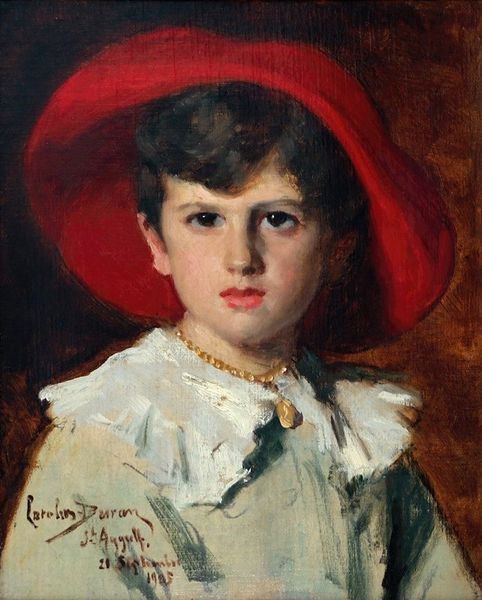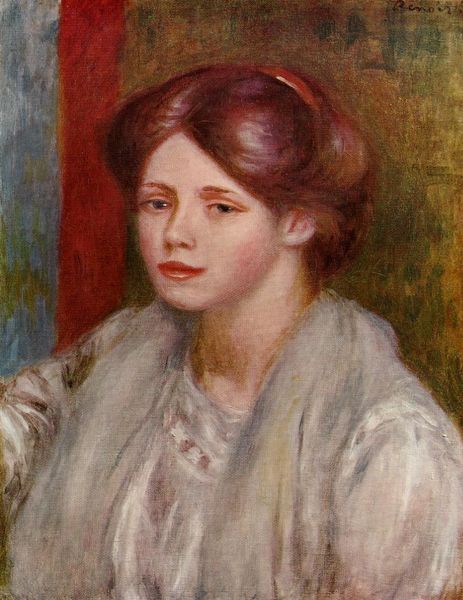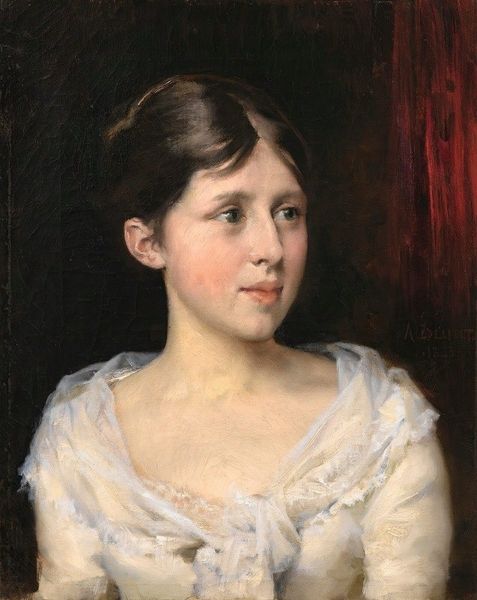
painting, oil-paint
#
portrait
#
painting
#
oil-paint
#
figuration
#
academic-art
#
realism
Copyright: Public domain
Editor: Here we have Thomas Couture’s "Study of a Young Girl," an oil painting. I'm struck by the creamy texture of the paint, and how it seems to give her face such a delicate quality. What do you make of it? Curator: Let’s think about the labor involved in creating that effect. Oil paint requires significant processing of raw materials. Then, Couture skillfully applies it, layering thin glazes to achieve that luminous skin tone. Think about the time and effort – a real investment. Who was this accessible to? Editor: Right, only those with means could afford to sit for a portrait and to commission an artwork! This makes you consider Couture’s choice to depict a young girl, in what appears to be simple garments? Curator: Exactly! Couture, working during a time of emerging social consciousness, was very aware of the message conveyed by depicting this young girl using labor-intensive and costly materials like oil. Her apparent innocence is thus intentionally constructed and reflective of societal values placed on female purity and the commodity of beauty. But tell me, where does Couture challenge traditional painting through material choices? Editor: Well, it’s quite subtle. It isn’t so much that it challenges conventions as it emphasizes the materiality, focusing less on narrative and more on the sheer physicality of the paint itself. The brushwork in her collar, for example, is pretty visible. Curator: Precisely! And the blending is masterful in some areas, allowing texture to show through in others. So the social status isn't solely a reflection of high society, it also reflects the artist's individual labor and technique, too! I've found this interesting, I've never looked at a simple portrait through this prism! Editor: This helps me to understand what realism really stood for in its time.
Comments
No comments
Be the first to comment and join the conversation on the ultimate creative platform.
